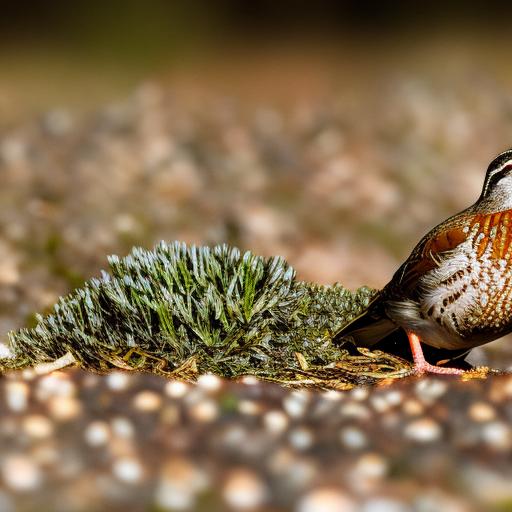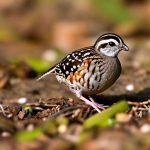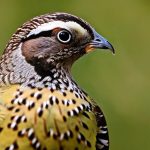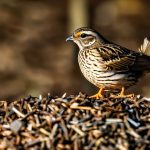Quails are small, ground-dwelling birds that are known for their social behavior and flocking tendencies. They are highly active during the day, foraging for food and engaging in social interactions with other members of their group. Quails are also known for their skittish nature, often being easily startled by sudden movements or loud noises. Understanding quail behavior is crucial when it comes to designing and placing feeders for these birds. By observing their natural behavior, you can determine the best locations for feeders and the most effective feeder designs to accommodate their needs.
Quails are known to be ground feeders, meaning they prefer to peck at food that is at ground level. They are also known to be quite messy eaters, often scattering food as they peck and scratch at the ground. This behavior should be taken into consideration when designing feeders for quails, as it can help minimize waste and spillage. Additionally, understanding the social dynamics of quails can help in determining the number of feeders needed to accommodate a flock, as well as the ideal spacing between feeders to prevent overcrowding and competition during feeding times.
Key Takeaways
- Quail are ground-dwelling birds that prefer to feed and forage in low, dense vegetation for protection.
- Proper feeder design and placement is crucial to accommodate quail behavior and prevent waste.
- Feeders with anti-waste features can help minimize spillage and reduce feed costs.
- Implementing a feeding schedule and portion control can help maintain quail health and prevent overeating.
- Minimizing spillage and scatter around feeders can reduce the risk of attracting pests and predators.
Proper Feeder Design and Placement
When it comes to designing feeders for quails, there are a few key factors to consider. First and foremost, the feeder should be designed to accommodate the ground-feeding behavior of quails. This means that the feeder should be low to the ground, allowing easy access for the birds to peck at the food inside. Additionally, the feeder should be designed to minimize waste and spillage, as quails are known to be messy eaters. This can be achieved by using feeders with anti-waste features such as raised edges or barriers to prevent food from being scattered outside of the feeder.
In terms of placement, feeders should be positioned in areas that are easily accessible to the quails, but also provide some level of protection from predators and the elements. Placing feeders near natural cover such as bushes or shrubs can provide a sense of security for the birds while they feed. It is also important to consider the spacing between feeders to prevent overcrowding and competition during feeding times. By strategically placing feeders in different areas of the quail habitat, you can ensure that all members of the flock have access to food without having to compete with each other.
Using Feeders with Anti-Waste Features
One of the biggest challenges when it comes to feeding quails is minimizing waste and spillage. Quails are known to be messy eaters, often scattering food as they peck and scratch at the ground. This can result in a significant amount of wasted feed, which can be both costly and detrimental to the environment. Using feeders with anti-waste features can help address this issue by containing the food within the feeder and preventing it from being scattered outside.
There are several types of feeders with anti-waste features that are suitable for quails. For example, feeders with raised edges or barriers can help keep the food contained within the feeder, reducing the amount of waste and spillage. Additionally, feeders with adjustable feeding ports can help control the flow of feed, preventing quails from overeating and wasting excess food. By using feeders with anti-waste features, you can help minimize the environmental impact of feeding quails while also reducing your overall feed costs.
Implementing Feeding Schedule and Portion Control
Feeding quails on a regular schedule and implementing portion control can help ensure that they receive an adequate amount of feed without overeating or wasting excess food. Quails are known to have a voracious appetite, often pecking at food continuously throughout the day if given the opportunity. By implementing a feeding schedule and portion control, you can help regulate their food intake and minimize waste.
Feeding quails at specific times of the day can help establish a routine for the birds, making it easier to monitor their feed consumption and adjust portion sizes as needed. Additionally, using feeders with adjustable feeding ports can help control the flow of feed, preventing quails from overeating and wasting excess food. By carefully monitoring their feed consumption and adjusting portion sizes accordingly, you can ensure that quails receive an adequate amount of feed without overindulging or wasting excess food.
Minimizing Spillage and Scatter
Minimizing spillage and scatter is crucial when it comes to feeding quails, as it can help reduce waste and prevent potential health hazards for the birds. Quails are known to be messy eaters, often scattering food as they peck and scratch at the ground. This behavior can result in a significant amount of wasted feed, which can attract pests and pose a risk of contamination. Minimizing spillage and scatter can be achieved by using feeders with anti-waste features such as raised edges or barriers to contain the food within the feeder.
In addition to using feeders with anti-waste features, it is important to consider the type of feed being used. Pelleted or crumbled feed is less likely to be scattered compared to whole grains or seeds, making it a more suitable option for feeding quails. By using the appropriate type of feed and implementing proper feeder design and placement, you can help minimize spillage and scatter while ensuring that quails receive an adequate amount of feed.
Regular Cleaning and Maintenance of Feeders
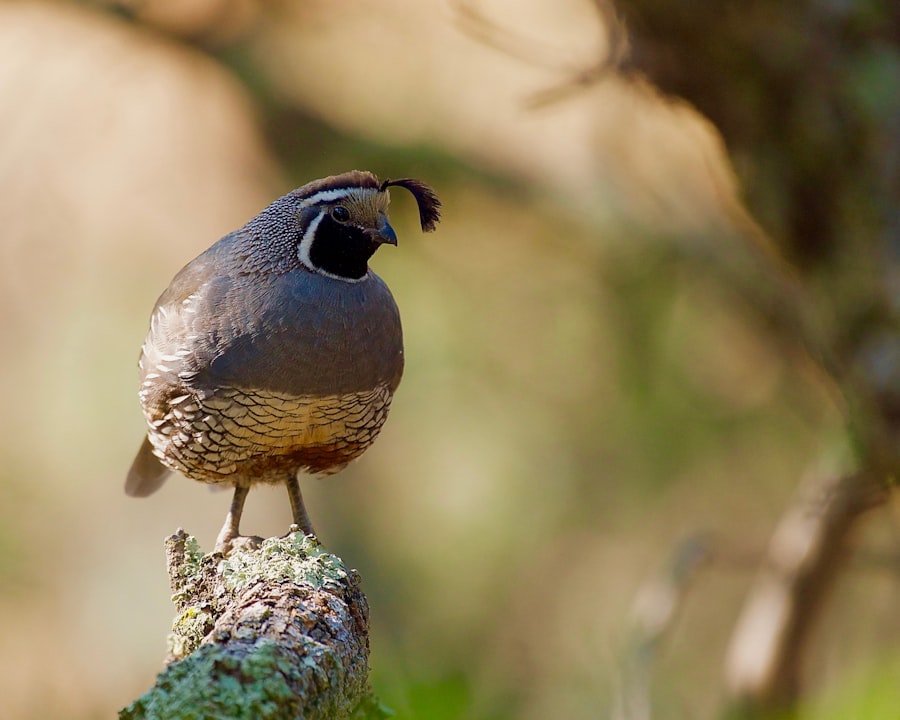
Regular cleaning and maintenance of feeders is essential for ensuring the health and well-being of quails. Dirty or contaminated feeders can pose a risk of disease transmission and attract pests, which can have detrimental effects on the birds. It is important to clean feeders on a regular basis, removing any leftover food, debris, or droppings that may have accumulated inside. Additionally, inspecting feeders for any signs of wear or damage and making necessary repairs or replacements can help ensure that they remain functional and safe for use.
When cleaning feeders, it is important to use mild detergents or disinfectants that are safe for use around birds. Avoid using harsh chemicals or cleaners that may leave behind harmful residues or fumes. After cleaning, thoroughly rinse and dry the feeders before refilling them with fresh feed. By maintaining clean and well-maintained feeders, you can help promote a healthy feeding environment for quails while minimizing the risk of disease transmission and pest infestations.
Monitoring and Adjusting Feed Consumption
Monitoring and adjusting feed consumption is an important aspect of feeding quails, as it can help ensure that they receive an adequate amount of feed without overeating or wasting excess food. By observing their feeding behavior and regularly checking the amount of feed remaining in the feeder, you can determine if adjustments need to be made to their portion sizes or feeding schedule.
It is important to monitor their feed consumption on a regular basis, especially during periods of temperature extremes or changes in their activity levels. During colder weather, quails may require additional calories to maintain their body temperature, while during warmer weather, their activity levels may increase, requiring more energy from their diet. By closely monitoring their feed consumption and adjusting portion sizes accordingly, you can ensure that quails receive an adequate amount of feed without overeating or wasting excess food.
In conclusion, understanding quail behavior is crucial when it comes to designing and placing feeders for these birds. Proper feeder design and placement should take into consideration their ground-feeding behavior and social dynamics to minimize waste and promote efficient feeding. Using feeders with anti-waste features can help contain food within the feeder and reduce spillage and scatter. Implementing a feeding schedule and portion control can help regulate their food intake and minimize waste. Regular cleaning and maintenance of feeders is essential for ensuring a healthy feeding environment for quails. Lastly, monitoring and adjusting feed consumption is important to ensure that quails receive an adequate amount of feed without overeating or wasting excess food. By following these guidelines, you can effectively manage feeding practices for quails while promoting their health and well-being.
If you’re looking for tips on how to keep quail from wasting feed, you’ll definitely want to check out the article “10 Ways to Prevent Quail from Wasting Feed” on PoultryWizard.com. This comprehensive guide offers practical strategies for minimizing feed waste and ensuring that your quail are getting the most out of their meals. Whether you’re a seasoned quail keeper or just starting out, this article provides valuable insights that can help you optimize your feeding practices. For more poultry-related information, you can also explore articles such as “What is the Incubation Period for Goose Eggs” and “A Frame Chicken Coop” on PoultryWizard.com.
FAQs
What are some common reasons for quail wasting feed?
Quail may waste feed due to factors such as poor feed quality, improper feeder design, overcrowding, or stress.
How can I prevent quail from wasting feed?
To prevent quail from wasting feed, ensure that the feed is of good quality, use feeders designed specifically for quail, provide enough space to reduce overcrowding, and minimize stress in the quail environment.
What type of feeders are best for preventing quail from wasting feed?
Feeders with smaller openings or specially designed for quail, such as tube or trough feeders, are best for preventing quail from wasting feed.
How can I reduce stress in my quail environment to prevent feed wastage?
To reduce stress in the quail environment, provide adequate space, minimize disturbances, maintain a clean and comfortable living environment, and ensure access to fresh water at all times.
Are there any specific feed management practices that can help prevent quail from wasting feed?
Yes, managing feed distribution and ensuring that feed is not left out for extended periods can help prevent quail from wasting feed. Additionally, using feeders with anti-waste features can also be beneficial.
Meet Walter, the feathered-friend fanatic of Florida! Nestled in the sunshine state, Walter struts through life with his feathered companions, clucking his way to happiness. With a coop that’s fancier than a five-star hotel, he’s the Don Juan of the chicken world. When he’s not teaching his hens to do the cha-cha, you’ll find him in a heated debate with his prized rooster, Sir Clucks-a-Lot. Walter’s poultry passion is no yolk; he’s the sunny-side-up guy you never knew you needed in your flock of friends!

